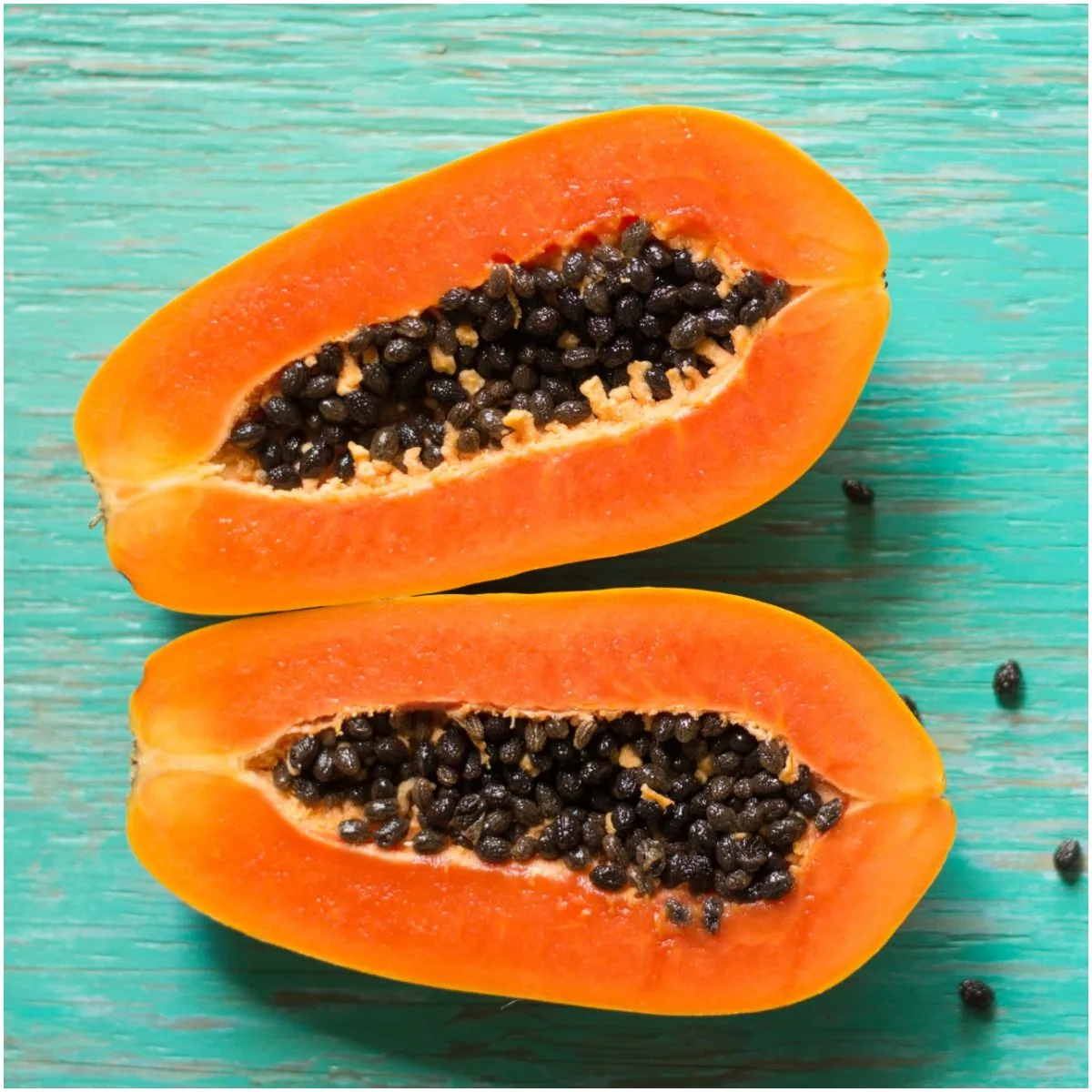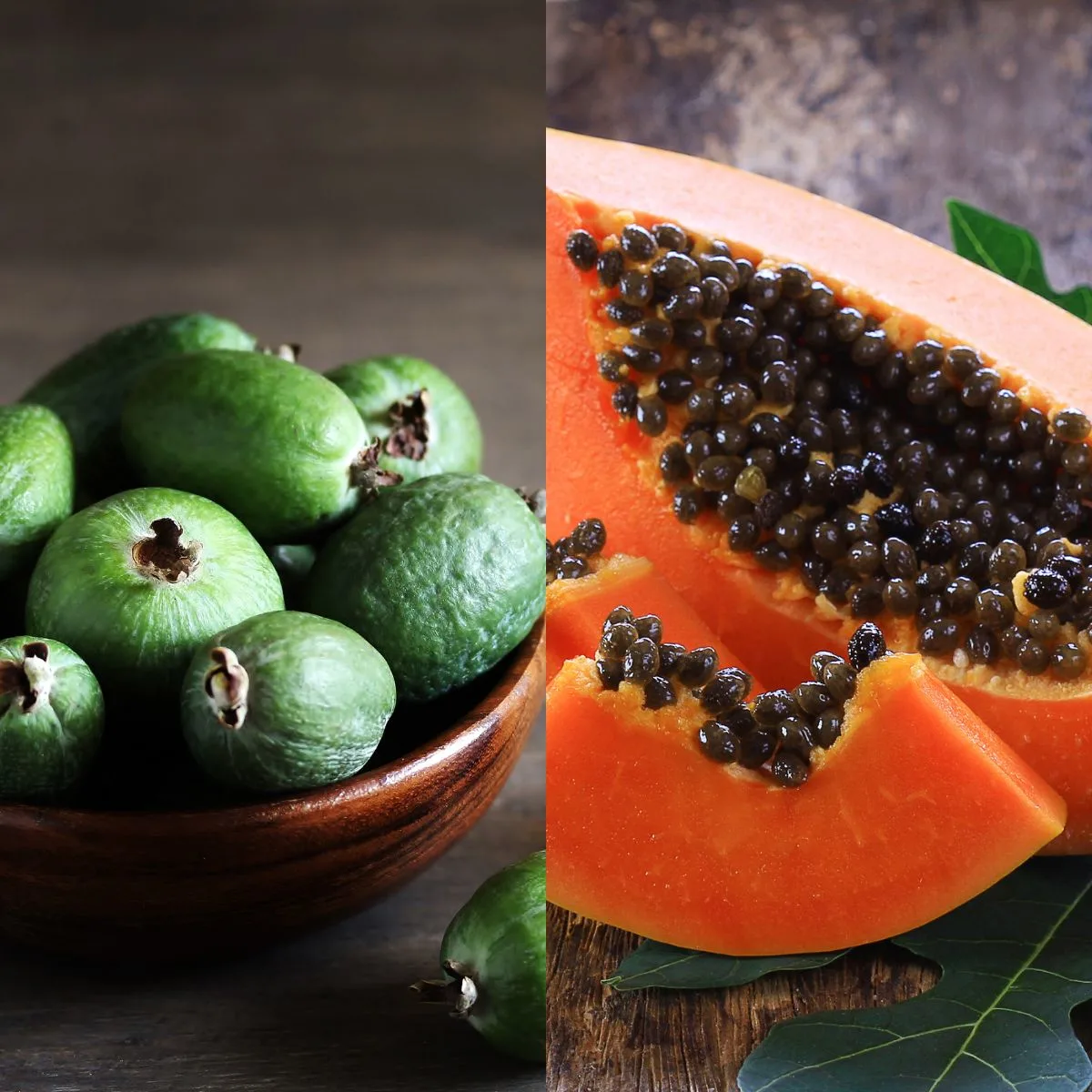Guava vs Papaya: here’s what makes them unique
Introduction
When trying to discover the differences between guava vs papaya, there is much to know about these tropical fruits.
They’re each delicious and nutritious, but how do you tell them apart? Here’s what to know about each of these fruits.
What Is Guava?

Max D Photography/Shutterstock
Native to Central America, South America, the Caribbean, and Mexico, guava is a fruit with a yellow or light green skin. Inside, the flesh features a red or pink hue. You’ll see seeds in there which are edible.
You can also eat the skin of a guava as well.
Ripe guava has a distinctive smell that is quite strong.
It’s also quite sweet and a bit musky.
The humble guava arrived in the US in the 1800s when people planted it for commercial growth in Florida.
They also did so in Hawaii, though at the time, it wasn’t part of the United States.
What Is Papaya?

Seksun Guntanid/Shutterstock
Papaya also shares some locations with guava in terms of growth.
It is a native fruit for Mexico and South America, and it can be found in many other tropical locations worldwide, including Hawaii.
When the skin of the papaya is a yellow-green hue, it is harvested.
As it ripens, it turns yellow. Inside, the flesh features a mostly orange color, though some may appear pink or even red.
Papayas also have edible seeds inside, though the skin is not to be eaten.
Some papayas can weight as much as 20 pounds though you’re mostly going to see them weighing in at no more than 2 pounds.
In certain parts of the world, papaya is called by other names like ‘pawpaw,’ ‘tree melon,’ or ‘mamao.’
You need to cut open a papaya to access that fleshy interior.
You can eat it as-is or cook it in your recipes.
There are also green papaya recipes, which use the fruit that isn’t fully ripe.
In this case, you need to cook it before eating it.
Guava vs Papaya Taste

Shutterstock
With guava, it has a sweet and pleasing flavor. Some liken it to a blend of strawberries and pears, though it depends on the type of guava.
Lemon or apple guava, as it is called, is the most common, which has a bit of a lemony flavor.
Papayas get sweeter as they ripen. So, it depends when you eat one how it will taste.
Some will be mild, while the riper it gets, the sweeter it will be.
They’re a bit similar to cantaloupe and mango, and they features a creamy texture inside that is pleasing to the palate.
ALSO READ: Arthroscopic vs Laparoscopic – differences
How to Choose
If you want to try guava or papaya, you should look for them at the store.
Those in warmer climates are more likely to find these fruits readily available.
For guava, you will want to choose one that is soft though not mushy.
It should give slightly to pressure from your hand.
Don’t pick any guava fruits that are extremely hard or have blemishes on them.
Should you have a guava already and it’s still firm, put it on your kitchen counter.
Make sure you keep it out of the sunlight, though, and in a few days, it will ripen up.
You will notice it has the right give to pressure and presents a strong and fruity smell.
From there, you can enjoy it right away or put it in your refrigerator.
It’s best to store it in a bag – either paper or plastic.
This will keep it from causing other fruits in your fridge to become ripe too quickly. But don’t forget about your guava! You will want to enjoy it when it is at the peak of freshness.
Papaya may be easier to find in most places.
It tends to be more expensive than other fruits, though depending on the season, you may find it at a good price.
Peak season for papayas from Hawaii runs from April through June and also from October through December.
To choose a proper papaya, you’ll want one that is mostly yellow those has a bit of green on the skin.
This way, you can let it fully ripen in your home.
The papaya should feel firm, yet give to pressure. You should also choose a papaya that feels heavy for the size and one that has smooth skin without blemishes.
A few black spots are ok, but don’t pick one with cuts or bruises.
Smell the papaya too. It should have a sweet fragrance if it’s a good one.
Don’t ever pick a papaya that is overly soft unless you’re planning to bring it home to puree at once. Most people want to let the papaya ripen for a few days at room temperature.
If you can’t wait to eat that papaya (and who could blame you?), then you should store it in a paper bag, so it ripens faster.
If your papaya is already ripe, you should put it in the refrigerator to slow down the ripening process.
Both guava and papaya are harder to freeze, though if you cover them in a simple sugar solution made with water and sugar, you can prevent wasting them.
ALSO READ: Gluconeogenesis vs Glycolysis: what’s the difference?
Key Differences Between Guava vs Papaya
Both guava and papaya are tropical fruits. However, guava can be eaten in its entirety, including the seeds and skin.
Papaya’s seeds can also be eaten, but you must remove the skin.
You can put them in your recipes, too, though papaya is easier to cook with than guava.
Ultimately though, both of these different tropical fruits will provide a sensational and refreshing taste for you to enjoy any way you slice them!
ALSO READ: Why did Jack In The Box discontinue Potato Wedges
